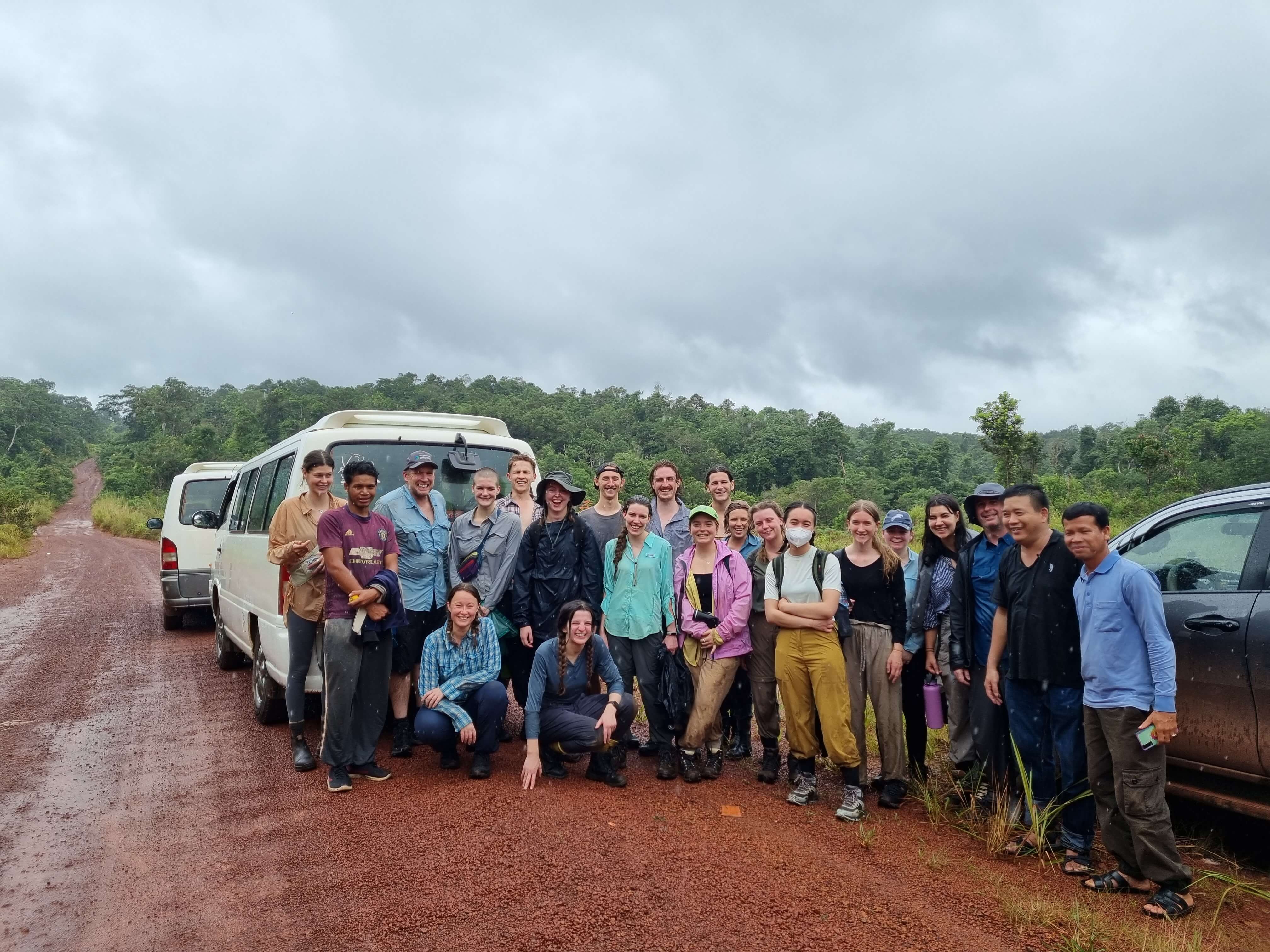Downstream Traffic: wildlife conservation and sustainable development’ Reflections on the future of Phnom Tamao Wildlife Rescue Centre from a Study Tour to Cambodia
The illegal wildlife trade is one of the largest drivers of biodiversity loss and species endangerment globally.
This is of particular concern in south-east Asia where the illegal harvesting and trade of animals and plants directly threatens many thousands of species for traditional medicines and wildlife derivatives, exotic pets, and consumption of bush meat.
In many south-east Asian countries, the conservation efforts to combat wildlife crime are led by non-government organisations and not-for-profit trusts dedicated to protecting and conserving wildlife, and supporting regional government agencies. One organisation that we have worked with is , in Cambodia. Since 2015 Environment Institute’s and , in the School of Biological Sciences ×îÐÂÌÇÐÄVlog of Adelaide, have led an International Study Tour to Cambodia (partly funded by then) to study tropical wildlife conservation and sustainable development. A major focus of this tour has been wildlife crime in the region, in partnership with Wildlife Alliance.
Since 2001 Wildlife Alliance have worked with the Cambodian Government to more effectively combat wildlife crime in Cambodia. This has included the formation of the Wildlife Rapid Rescue Team (WRRT), consisting of judicial police officials from the Forestry Administration and Military police from the Royale Gendarmerie. They are assisted by full-time staff from Wildlife Alliance who provide animal husbandry training, technical assistance for investigations, and logistical and financial support. A particularly valuable part of this relationship has been the – a wildlife park and rehabilitation centre surrounded by 6,000 acres of forest preserve.
[caption id="attachment_16694" align="aligncenter" width="783"]
 In the Cardamom Mountains after a day hiking through the tropical grasslands and rainforest. Photo: A/P Phill Cassey[/caption]
In the Cardamom Mountains after a day hiking through the tropical grasslands and rainforest. Photo: A/P Phill Cassey[/caption]The study tour visited Phnom Tamao on each of our trips to Cambodia, and the site is a highly valuable forested area with considerable environmental importance. At its’ heart is the Wildlife Rescue Centre, which works to rehabilitate and care for animal victims of the illegal wildlife trade; many of which are returned to the wild if their condition allows. Last week all of this was threatened when developers started to destroy habitat within the sanctuary and succeeded in deforesting around 500 hectares of Tamao forest in a matter of days! Thanks to the Wildlife Alliance campaign to save the forest, some brave reporting by journalists, a very large public outcry, and a declaration by Prime Minister Hun Sen, the clearing and development has ceased, and all deals to develop Tamao Sanctuary have been revoked in order to preserve the forest adjacent to the Phnom Tamao Zoological Park and Wildlife Rescue Centre. The development company has also been ordered to replant the areas destroyed.
[caption id="attachment_16678" align="aligncenter" width="797"]
 Visit to Phnom Tamao Wildlife Rescue Centre. The most famous of the sanctuary’s residents is the male elephant Chhouk, who has a prosthetic leg to replace the damaged one lost to a snare.ÌýPhoto: A/P Phill Cassey[/caption]
Visit to Phnom Tamao Wildlife Rescue Centre. The most famous of the sanctuary’s residents is the male elephant Chhouk, who has a prosthetic leg to replace the damaged one lost to a snare.ÌýPhoto: A/P Phill Cassey[/caption]While this is great news it reveals how tenuous our protection of wildlife and their habitats remains. We are currently facing an environmental and climate catastrophe and organisations like Wildlife Alliance are at the heart of protecting biodiversity and safeguarding our own future wellbeing. Partnerships between industry, research, not-for-profit, and governments are essential for ensuring that wildlife crime does not proliferate and further threaten our environmental health.
[caption id="attachment_16679" align="aligncenter" width="440"]
 Dismantling a poaching snare, most likely set for sun bears (Helarctos malayanus)ÌýPhoto: A/P Phill Cassey[/caption]
Dismantling a poaching snare, most likely set for sun bears (Helarctos malayanus)ÌýPhoto: A/P Phill Cassey[/caption]Further Reading:
Heinrich, S., Ross, J.V., Gray, T.N., Delean, S., Marx, N. and Cassey, P., 2020. . Biological Conservation, 241, p.108379.

Newsletter & social media
Join us for a sensational mix of news, events and research at the Environment Institute. Find out aboutÌýnew initiatives andÌýshare with your friends what's happening.
ÌýÌýÌý
